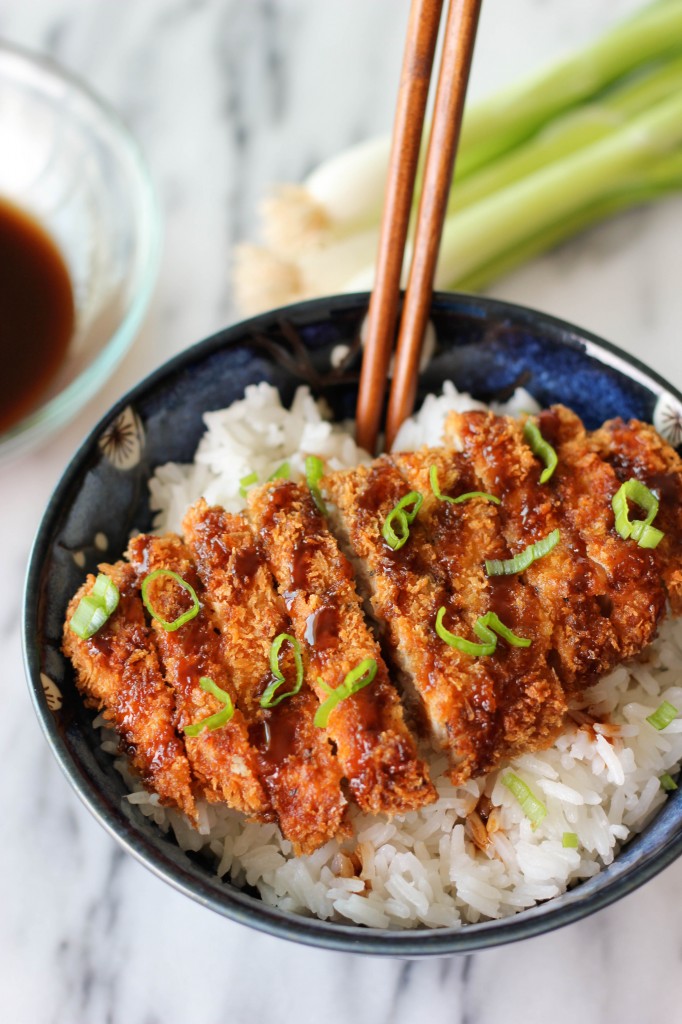
Crispy and Succulent: A Culinary Adventure into Japanese Tonkatsu Pork Cutlets
In the culinary tapestry of Japan, tonkatsu stands out as a beloved dish that tantalizes taste buds with its crispy exterior and tender, juicy interior. Originating in the late 19th century, tonkatsu has evolved into a national favorite, enjoyed in both casual eateries and upscale restaurants alike. This comprehensive guide will delve into the intricacies of crafting this delectable dish, providing you with the knowledge and techniques to create authentic Japanese tonkatsu pork cutlets in your own kitchen.
Chapter 1: The Essence of Tonkatsu
Tonkatsu, meaning "pork cutlet," is a culinary masterpiece that encapsulates the essence of Japanese cuisine. It consists of thinly sliced pork, breaded and deep-fried to perfection, resulting in a harmonious blend of textures and flavors. The key to achieving the perfect tonkatsu lies in the meticulous preparation and execution of each step.
Chapter 2: Selecting the Perfect Pork
The foundation of a great tonkatsu begins with the selection of high-quality pork. Opt for a tender cut with a good balance of fat and lean meat, such as pork loin or tenderloin. The thickness of the pork should be around 1/2 inch, ensuring even cooking and a juicy interior.
Chapter 3: The Art of Panko Breadcrumbs
Panko breadcrumbs are the secret ingredient that gives tonkatsu its signature crispy texture. These coarse, airy breadcrumbs create a light and fluffy coating that adheres perfectly to the pork. To achieve the best results, use fresh panko breadcrumbs and avoid overworking the mixture.
Chapter 4: The Three-Step Breading Process
The three-step breading process is essential for creating a secure and flavorful coating. First, season the pork with salt and pepper. Next, dip the pork into a bowl of flour, ensuring it is evenly coated. Then, dip the pork into a beaten egg mixture, allowing the excess to drip off. Finally, coat the pork generously with panko breadcrumbs, pressing gently to adhere.
Chapter 5: The Deep-Frying Technique
Deep-frying is the final and most critical step in the tonkatsu-making process. Heat vegetable oil in a deep fryer or large saucepan to 375°F (190°C). Carefully lower the breaded pork cutlets into the hot oil and fry for 3-4 minutes per side, or until golden brown and cooked through.
Chapter 6: The Perfect Tonkatsu Sauce
Tonkatsu is traditionally served with a sweet and tangy tonkatsu sauce. To make the sauce, combine equal parts soy sauce, mirin, and sake in a saucepan. Bring the mixture to a simmer and cook until it thickens slightly. Add a touch of honey or sugar to taste.
Chapter 7: Serving and Enjoying Tonkatsu
Tonkatsu is typically served with a side of shredded cabbage and a bowl of rice. Cut the tonkatsu into bite-sized pieces and dip them into the tonkatsu sauce before enjoying. The crispy exterior will yield to a tender and juicy interior, creating a symphony of flavors that will leave you craving for more.
Chapter 8: Variations and Accompaniments
While the classic tonkatsu is a culinary masterpiece in its own right, there are numerous variations and accompaniments that can enhance the experience. Try experimenting with different types of pork, such as pork belly or ground pork. Add toppings such as grated cheese, sautéed onions, or a fried egg. Serve tonkatsu with a side of miso soup, pickles, or a fresh salad.
Chapter 9: Troubleshooting Common Mistakes
Even the most experienced cooks can encounter challenges when making tonkatsu. Here are some common mistakes to avoid:
- Overcrowding the fryer: This can result in uneven cooking and soggy tonkatsu.
- Using too much breading: This can create a thick, heavy coating that overpowers the pork.
- Frying at too low a temperature: This will result in greasy tonkatsu that lacks crispiness.
- Overcooking the pork: This will dry out the meat and make it tough.
Chapter 10: Tips for Success
To achieve the best possible results, follow these tips:
- Use a meat mallet to tenderize the pork before breading.
- Allow the breaded pork to rest for 10-15 minutes before frying. This will help the coating adhere better.
- Fry the tonkatsu in batches to maintain the oil temperature.
- Drain the tonkatsu on paper towels to remove excess oil.
- Serve the tonkatsu immediately with your favorite dipping sauce and accompaniments.
Conclusion
Creating authentic Japanese tonkatsu pork cutlets is a culinary adventure that rewards patience and attention to detail. By following the steps outlined in this guide, you can master the art of this beloved dish and impress your friends and family with a crispy, succulent, and unforgettable culinary experience. So gather your ingredients, fire up the deep fryer, and embark on a journey into the heart of Japanese cuisine with tonkatsu pork cutlets.















